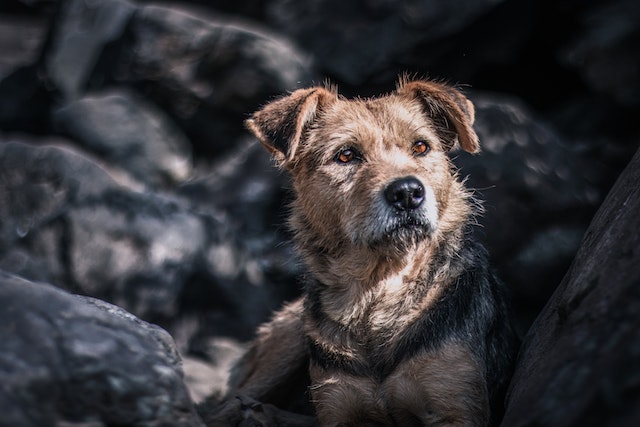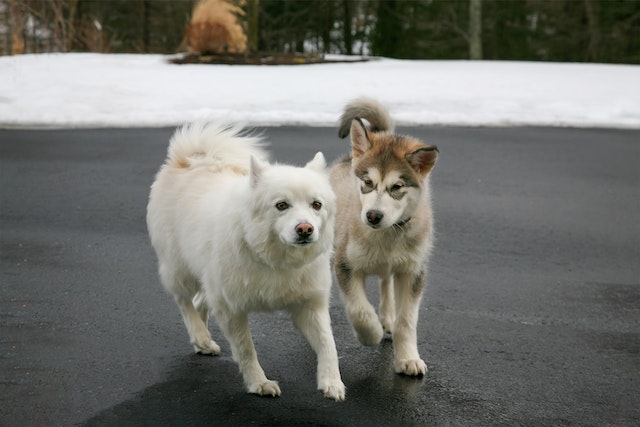The Border Terrier

The Border terrier is one of the best dogs you can keep if you have children in the house. Not only does he fair well with children of all ages, he’s the perfect combination of behaving inside the house and frolicking when outdoors. One of the few terriers you can leave alone and not come back to what used to be your house!
If you’re a fan out biking and hiking, the Border terrier is your perfect companion. Their stamina will go strong for as long as your does. Although, when you do take them for walks, put a leash on them since they like to chase smaller animals. They get along rather well with other dogs and can even adjust to cats if they’re raised with them.
Their intuition when it comes to new sights and sounds is what makes them excellent watch dogs. Reserving their barks only for new happenings, the Border terriers are very alert of their surroundings. In spite of being independent and strong-willed, they are easy to train as they adapt to your needs relatively faster and are very eager to please their family.
Care & Health:
- Major concerns: none
- Minor concerns: none
- Occasionally seen: CHD, heart defects
- Suggested tests: hip, cardiac
- Life span: 12 – 15 years
- Grooming: The Border terrier requires an occasional grooming although the coat does need to clipped short every week and the dead hair removed.
History:
The Border terrier is one of the oldest terriers known in England and is said to have gotten the name from the border region between Scotland and England. Initially used as hunting dogs, the Border terriers were later used by shepherds and farmers as herd dogs for their stock. Up until the English Kennel Club registered this terrier in 1920, which was also then the first Border Terrier Club of England was formed, they were relatively unheard of. In 1930, the AKC admitted them and as of till 2007, they rank 81 out of 157 breeds.
The American Eskimo Dog (Miniature)

The Miniature American Eskimo might look like one of those strong-silent-types but in reality, it’s just as clingy as the next dog. Human companionship or lack of it can bring out some very extreme behavioral changes in the Miniature American Eskimo. If it’s lovable and well behaved when he’s around his family, leaving him alone can cause him to lead to naughty and destructive behavior. If you do choose to get this breed of American Eskimo home then you’ve to be schedule your day around the dog.
To avoid spurts of energy, possibly springing out at all the odd times, take them for long walks on a daily basis. If possible, squeeze in a game or two that will require them to run to and from one point. Owing to the fact that they were previously used as circus dogs, the Miniature American Eskimos are easy to train. One behaviour you could possibly modify is their yappy bark.
They make excellent watchdogs, immediately sensing any new sight, sound or smell on their territory. This could lead to some barking over indulgence! They’re a one-family dog and warming to a new person could take some time.
Although they are great with children, the Miniature Eskimo dogs don’t fare so well with other pets, unless raised with them…
Care & Health:
- Major concerns: none
- Minor concerns: patellar luxation
- Occasionally seen: none
- Suggested tests: (knee)
- Life span: 12 – 14 years
- Grooming: With the thick coats that the Eskies have, their coat requires to be brushed at least twice a day.
History:
The American Miniature Eskimo Dogs are commonly referred to the as Spitz, by their owners. Belonging to the Spitz family, the Miniature Eskimo dogs were a common companion among German immigrants. It is believed that they descended from the European Spitzes including the white Keeshound, the white German Spitz, the white Pomeranian and the Volpino Italiano (also known as the white Italian Spitz).
In the late 19th century, they were a popular choice for circus dogs, due to their beautiful white coat, intelligence, trainability, and their agility. The American Eskimo Dog club was formed in 1985, but it wasn’t until 1995 that the AKC registered the Miniature American Eskimo dog under the non-sporting category. As of 2007, they ranked 109th out of 157 breeds.